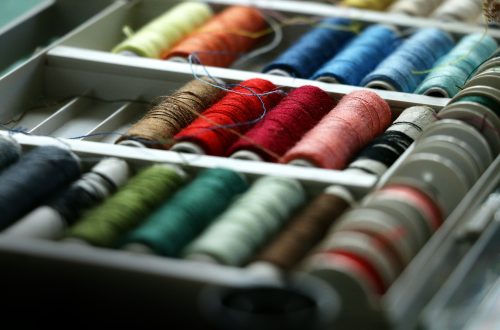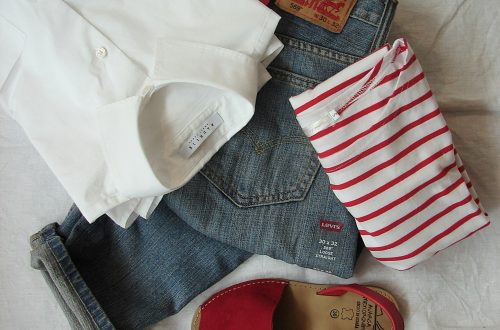
A Beginner’s Guide To Thrift Shopping: Finding Hidden Gems
Understanding the thrill of thrift shopping goes beyond merely seeking out bargains; it’s about the joy of discovery and the stories that each item holds. The atmosphere of a thrift store is charged with potential, where every rack and shelf invites exploration. Unlike traditional retail environments, where items are often mass-produced and uniform, thrift stores offer a curated collection of unique pieces—each with its own history.
This unpredictability creates an exhilarating experience; you never know when you’ll stumble upon that perfect vintage jacket or a rare book.
As you sift through clothing, furniture, or decor, you become an active participant in a treasure hunt. This sense of adventure is part of what makes thrift shopping so appealing. It encourages creativity and individuality; finding that one-of-a-kind piece can inspire new outfits or home decor ideas that reflect your personal style.
Moreover, thrift shopping promotes sustainable practices by giving pre-loved items a second chance at life. Each purchase not only saves money but also supports eco-friendly consumer habits, reducing waste in landfills. This blend of excitement and responsibility enhances the overall experience, making each find feel even more rewarding.
In essence, the thrill lies in the journey—the unexpected finds and the satisfaction of uncovering hidden gems that resonate with your taste while contributing to a more sustainable world.

Essential Tips For Navigating Thrift Stores
Navigating thrift stores can be an exciting adventure, but it requires a bit of strategy to uncover those hidden gems. First and foremost, approach your thrift shopping experience with an open mind. Unlike traditional retail environments, thrift stores often have a hodgepodge of items, and the thrill lies in the unexpected finds. Allow yourself to explore various sections—clothing, home decor, and books—because treasures can be found in the most unlikely places.
Timing plays a crucial role in successful thrift shopping. Visiting during off-peak hours can grant you more space and time to sift through items without feeling rushed. Additionally, keep an eye on store schedules for sales or special promotions; many thrift shops offer discounts on certain days.
When you’re in the store, take your time to examine each piece closely. Look for quality materials and unique designs that stand out from mass-produced items. Don’t hesitate to try things on or test them out when applicable; fit and functionality are key components of a good find.
Finally, build relationships with staff members who often have insights into new arrivals or upcoming sales. They might even point you toward specific aisles where you’re likely to find what you’re looking for. With patience and persistence, you’ll soon discover that thrifting is not just about shopping; it’s about embracing creativity and sustainability while building a one-of-a-kind collection that tells your story.
Identifying Quality Items: What To Look For
When diving into the world of thrift shopping, identifying quality items can be a rewarding skill that transforms your experience from a simple hunt to an exciting treasure quest. The first step is to develop an eye for craftsmanship. Examine the seams and stitching; well-constructed garments will have neat, even stitches that indicate durability. Look for items made from natural fibers like cotton, wool, or linen, as these materials typically age better than synthetic ones.
Next, consider the item’s condition. Minor wear such as a small stain or loose thread can often be remedied with a little TLC, but significant damage like large tears or extensive pilling might not be worth the effort. Pay attention to unique details such as buttons and zippers; high-quality pieces often feature sturdy hardware that enhances both function and aesthetic appeal.
Furthermore, don’t overlook the label. While brand names aren’t everything, established brands often maintain higher production standards. An understanding of vintage labels can also lead you to exceptional finds that have stood the test of time.
Lastly, trust your instincts; if something feels right in terms of style and fit—even if it requires alterations—don’t hesitate to make it yours. Thrift shopping is about discovering pieces that resonate with you while ensuring they are built to last through countless adventures ahead.
How To Spot Designer Finds And Vintage Treasures
When diving into the world of thrift shopping, the thrill of discovery often lies in the art of spotting designer finds and vintage treasures. Begin by honing your observational skills; familiarize yourself with key indicators of quality and authenticity. Look for labels that are synonymous with luxury—brands like Chanel, Gucci, or Prada often have distinctive markings or stitching details. Check for craftsmanship; high-end items typically feature sturdy seams, quality zippers, and well-constructed linings.
Understanding vintage fashion is equally crucial. Items made before the 1980s often boast unique silhouettes and fabrics that may not be found in today’s mass-produced clothing. Seek out pieces that exhibit classic styles or rare prints which can tell a story about their era. Pay attention to materials; natural fibers such as silk, wool, and cotton are usually more desirable than synthetic ones.
Don’t overlook accessories—designer handbags, statement jewelry, or even shoes can be hidden gems waiting to be unearthed. The condition is also important; minor imperfections can sometimes indicate age but shouldn’t deter you from considering a purchase if it’s otherwise intact.
Finally, trust your instincts and embrace the unexpected. Thrift shopping is an adventure where the most remarkable finds often arise from being open-minded and willing to explore beyond your usual tastes. Happy hunting!

Making The Most Of Your Thrift Shopping Experience
When venturing into the world of thrift shopping, maximizing your experience can turn a simple outing into a treasure hunt. Start by embracing the mindset of exploration. Each store is a unique ecosystem filled with potential finds waiting to be uncovered. Approach each aisle as an opportunity, keeping an open mind about what you might discover.
Timing can significantly enhance your thrift shopping journey. Visiting stores during restocking days, often mid-week, ensures fresh inventory, while weekends may bring more competition from fellow shoppers. Dress comfortably and wear layers; thrift shops can vary in temperature and you’ll want to easily slip on or off items to gauge fit.
As you browse, take your time—patience is key in sifting through racks overflowing with clothing and accessories. Look closely at labels; quality brands often signal durability and style longevity. Don’t shy away from items that require minor repairs or adjustments; these “fixer-uppers” can be transformed into statement pieces with a bit of creativity.
Finally, consider the thrill of negotiation. Many thrift stores are open to haggling on prices, especially if you’re buying multiple items or if something has been sitting for a while. This approach not only enhances your shopping experience but also fosters a sense of community as you engage with shop owners and fellow treasure hunters alike.
Caring For Your Thrifted Treasures: Cleaning And Restoration Tips
Caring for your thrifted treasures is essential to ensure they remain in good condition and continue to bring joy to your wardrobe or home. When you bring a second-hand item into your life, it often comes with its own history, and part of the thrill of thrift shopping is reviving these hidden gems.
The first step in caring for thrifted items is cleaning. Always check the care label if available; it will guide you on the best washing methods. For clothing, a gentle wash cycle with cold water can help preserve colors and fabrics. If you find something particularly delicate or vintage, consider hand-washing or taking it to a professional cleaner specializing in vintage garments.
For non-clothing items like ceramics or furniture, a simple soap and water solution usually does the trick, but be cautious with any materials that may require special treatment.
Restoration can also play a significant role in enhancing your finds. Minor repairs such as sewing up small tears or reattaching buttons can breathe new life into worn clothing. For furniture pieces with scratches or dents, wood polish can work wonders; just test it on an inconspicuous area first.
Ultimately, treating each thrifted item with care not only preserves its beauty but also honors its unique story—transforming what was once overlooked into cherished possessions in your collection.




